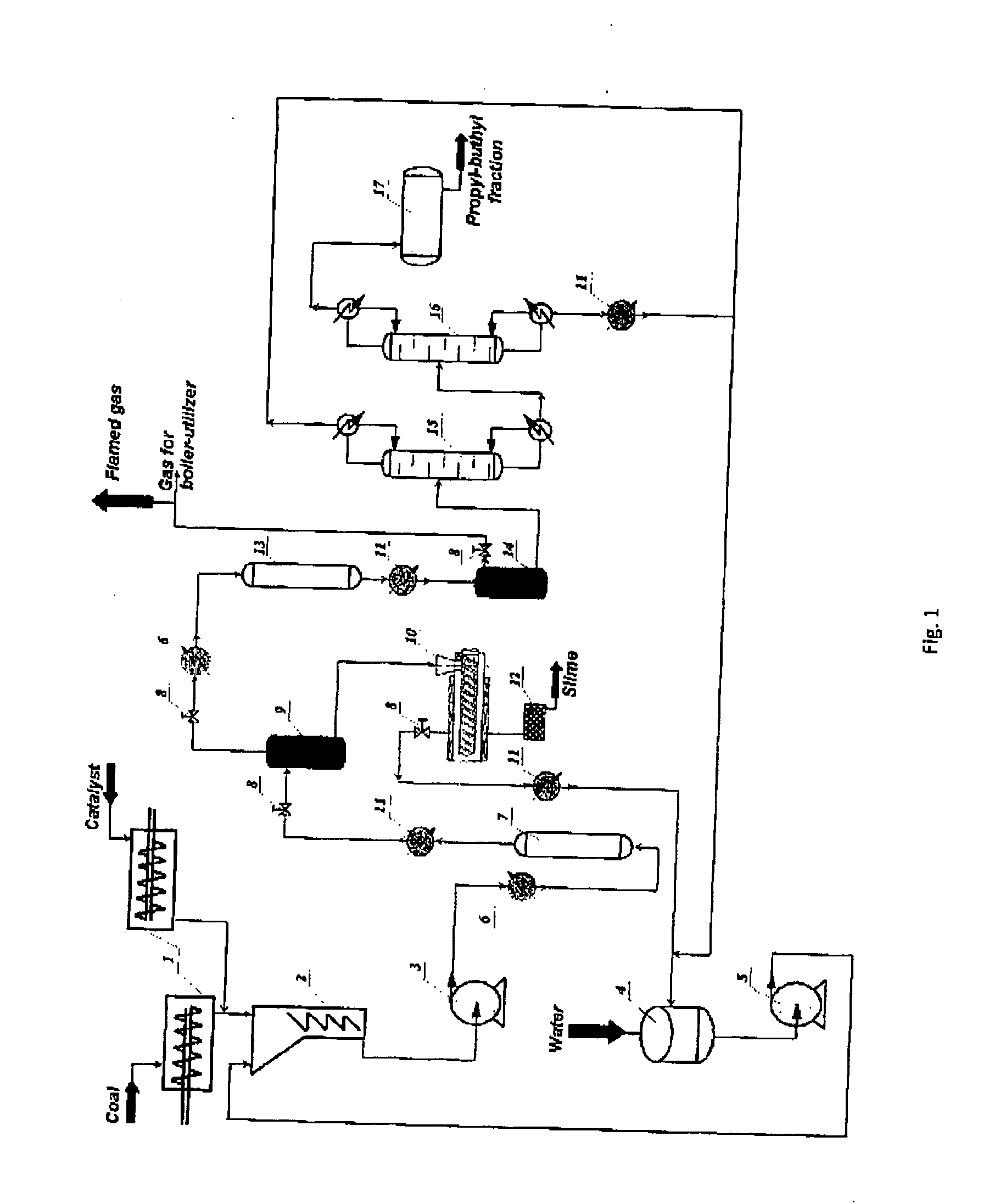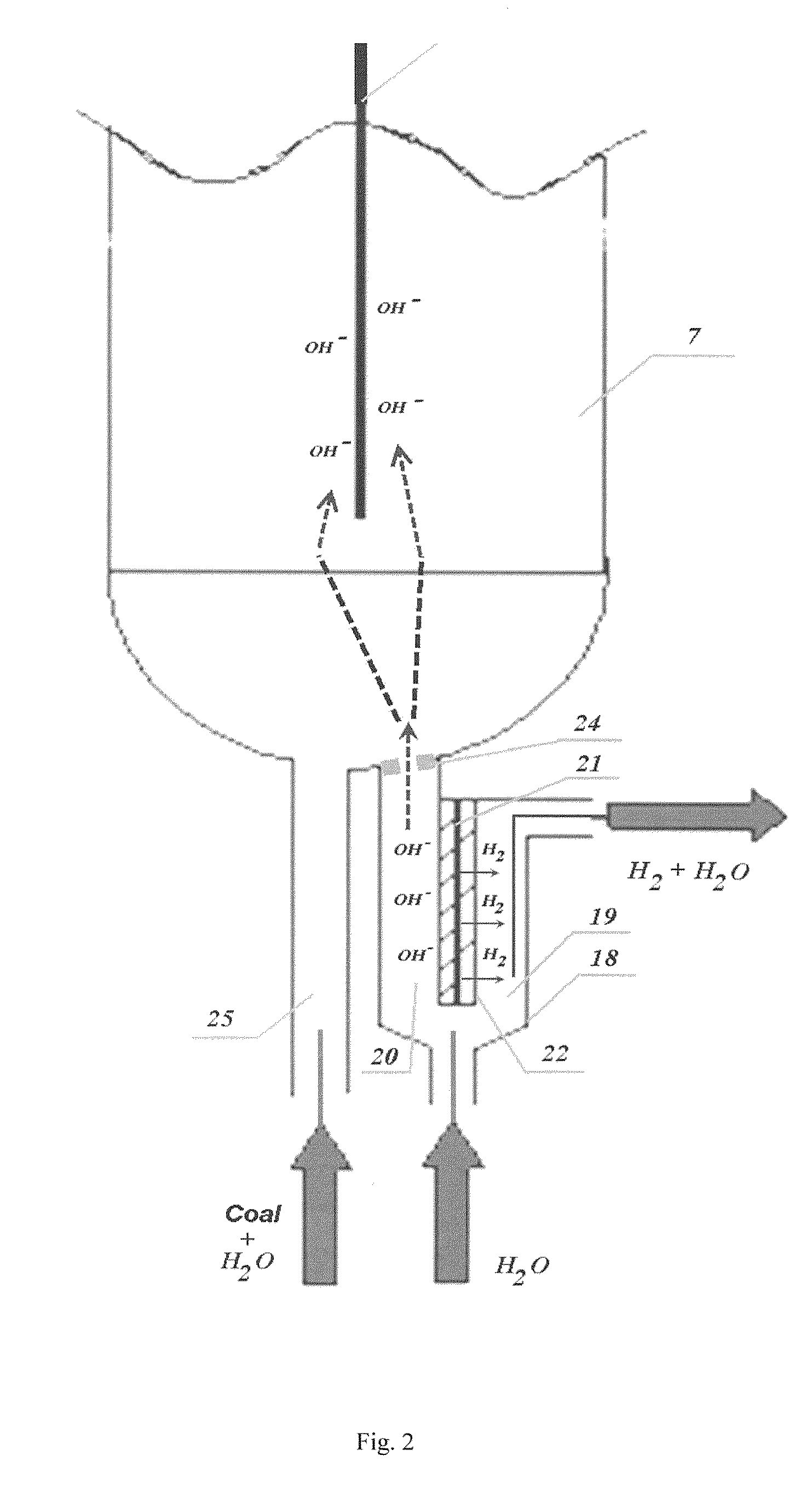Process for generation of synthetic fuel from carbonaceus substances
a carbonaceous substance and synthetic fuel technology, applied in the field of synthetic fuel production, can solve the problems of high raw material price, low production, complicated wide application of dme, etc., and achieve the effect of reducing hazardous emissions and increasing the availability of raw materials
- Summary
- Abstract
- Description
- Claims
- Application Information
AI Technical Summary
Benefits of technology
Problems solved by technology
Method used
Image
Examples
example 1
[0060]A 30%-coal suspension in water without a catalyst was supplied into a reactor during six hours with the consumption of 5 g of coal per hour (carbon content is 3.6 g). The content of a brown coal is as follows: water, adsorbed gases and volatile organic compounds when drying up to 200° C.—2.7%, by weight.; organic carbon content burning up to 1200° C.—72.5%, by weight.; ash—24.8%. The reaction was carried out at the temperature of 390-450° C. The gas generated in the reactor of the first stage was supplied into the reactor of the second stage to be converted at the temperature of 240-270° C. The pressure in the reactor of the first stage was 240 bars; the second one was 100 bars. The results are shown in Table 1.
example 2
[0061]A 30%-coal suspension in water with Ca(OH)2 catalyst with the quantity of 3.01 g for the whole coal was supplied into the reactor during six hours with the speed of 5 g per hour. The interaction were carried out at the temperature of 390-450° C. The generated gas was supplied into the reactor of the second stage functioning at the temperature of 240-270° C. The pressure in the reactor of the first stage has been 240 bars; the second one was 100 bars. The results are shown in Table 1.
example 3
[0062]A 30%-coal suspension in water with NaOH catalyst with the quantity of 1.52 g for the whole coal was supplied into the reactor during six hours with the speed of 5 g per hour. The reaction was carried out at the temperature of 390-450° C. and with the pressure of 240 bars. The generated gas was supplied into the reactor of the second stage functioning in the mode similar to the one described in examples 1 and 2. The results are shown in Table 1.
PUM
| Property | Measurement | Unit |
|---|---|---|
| pressure | aaaaa | aaaaa |
| temperature | aaaaa | aaaaa |
| pressure | aaaaa | aaaaa |
Abstract
Description
Claims
Application Information
 Login to View More
Login to View More - R&D
- Intellectual Property
- Life Sciences
- Materials
- Tech Scout
- Unparalleled Data Quality
- Higher Quality Content
- 60% Fewer Hallucinations
Browse by: Latest US Patents, China's latest patents, Technical Efficacy Thesaurus, Application Domain, Technology Topic, Popular Technical Reports.
© 2025 PatSnap. All rights reserved.Legal|Privacy policy|Modern Slavery Act Transparency Statement|Sitemap|About US| Contact US: help@patsnap.com


